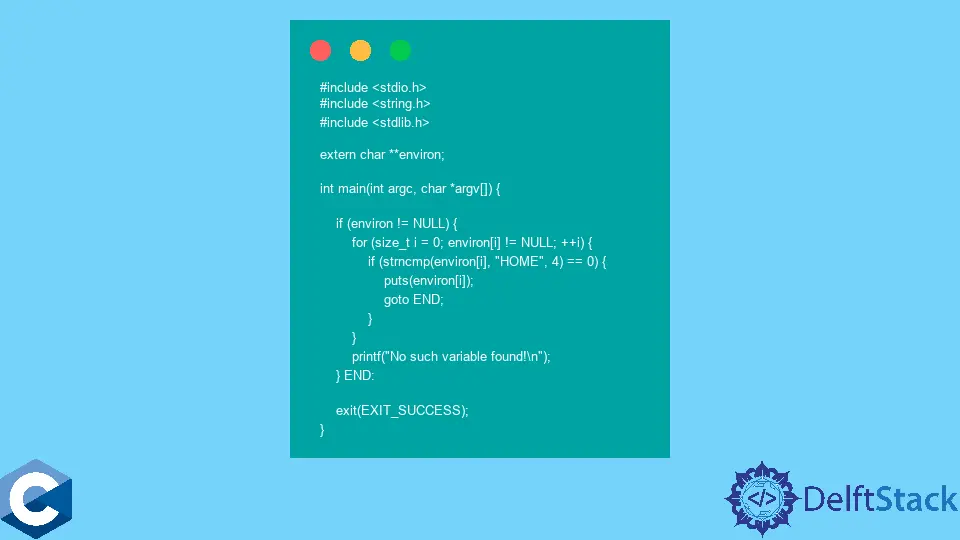使用 C 语言中的 goto 语句

本文将演示关于如何在 C 语言中使用 goto 语句的多种方法。
使用 goto 语句在 C 语言中实现循环
goto 关键字是 C 语言的一部分,它提供了一个做无条件跳转的结构。if 和 switch 语句是条件跳转的例子。goto 构造由两部分组成:goto 调用和标签名。代码中的任何语句都可以在前面加一个标签,标签只是一个标识符,后面加一个冒号。goto 调用强制代码执行跳转到标签后的第一条语句。goto 只能跳转到同一个函数内部的标签,而且标签在整个函数中都是可见的,无论在哪一行定义。
在下面的例子中,我们演示了一个简单的循环,在每个循环中比较变量 score 和 1000。如果 score 小于等于,它就递增并再次跳转到比较语句。一旦 if 语句为真,再调用一次 goto 调用,执行跳转到 EXIT 标签,导致程序正常终止。这个例子代码和其他很多例子代码类似,可以不使用 goto 语句重新实现,因此比较容易阅读。一般来说,关于 goto 语句的争论非常激烈,有人认为它对可读代码完全是有害的,也有人仍然认为它有一些实际的用例。
#include <stdio.h>
#include <stdlib.h>
#include <string.h>
extern char **environ;
int main(int argc, char *argv[]) {
int score = 1;
START:
if (score > 1000) goto EXIT;
score += 1;
goto START;
EXIT:
printf("score: %d\n", score);
exit(EXIT_SUCCESS);
}
输出:
score: 1001
在 C 语言中使用 goto 语句来摆脱嵌套循环
goto 语句可以很好的改变控制流程,如果循环里面的条件语句满足,有些代码也应该跳过。下面的代码示例演示了一个类似的场景,环境变量数组被访问和搜索。注意,外层的 if 语句检查指针是否有效,然后才继续执行循环。循环本身内部还有一个条件,它检查每个环境变量的具体字符串。如果找到了字符串,我们就可以脱离循环,不浪费更多的处理资源,跳过下面的 printf 语句。这就为内部 if 语句内包含的 goto 调用创造了一个有用的情景,可以使程序跳出外部的 if 语句,继续执行其余的代码。
#include <stdio.h>
#include <stdlib.h>
#include <string.h>
extern char **environ;
int main(int argc, char *argv[]) {
if (environ != NULL) {
for (size_t i = 0; environ[i] != NULL; ++i) {
if (strncmp(environ[i], "HOME", 4) == 0) {
puts(environ[i]);
goto END;
}
}
printf("No such variable found!\n");
}
END:
exit(EXIT_SUCCESS);
}
输出:
HOME=/home/username
Founder of DelftStack.com. Jinku has worked in the robotics and automotive industries for over 8 years. He sharpened his coding skills when he needed to do the automatic testing, data collection from remote servers and report creation from the endurance test. He is from an electrical/electronics engineering background but has expanded his interest to embedded electronics, embedded programming and front-/back-end programming.
LinkedIn